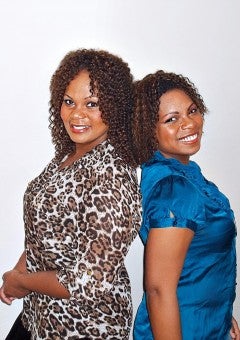
In 2005 thrift reseller Ronda Polhill, 45, sat in her Seattle basement, breast-feeding her fifth baby. With her free arm, she photographed and wrote descriptions of used women’s suits in hopes of selling them on eBay. “It was crazy, considering I was only making $5 out of every $20,” she says now. To raise extra income for her older children’s college tuition, she searched for clothing at the Goodwill store. If she found anything promising, she called her husband, John Polhill III, and asked him to check how similar items were reselling on eBay. Depending on the results, she’d pick or pass. But she wasn’t satisfied with the way John, then a technical recruiter at Microsoft, searched and checked on the eBay inventory, so in 2009 she bought a smartphone and checked it herself while thrifting. It worked flawlessly. Her new goal: To spend $10, resell for $100, and net about $70 after shipping and fees. Polhill was so passionate that she wrote a book called The R.E.L.I.C.S. Thrift Shopping Method (5 Muses Publishing; also available as a Kindle e-book), published earlier this year.
Then, without warning, the desire for extra money changed to necessity: John was laid off and in 2010 had open-heart surgery. Ronda’s mother died soon after in New Jersey and Ronda had to fly across the country on short notice. Upon her return, she says she needed a project “for catharsis.” She noticed that the photo-sharing app, Instagram, was hot. With an idea for a picture-sharing mobile app in mind, she approached her daughter Shalayne Kemp, 24, who had recently received an associate’s degree in computer science. By spring 2012 mother and daughter were collaborating on an app suite, which they call AsterNotes; it allows thrift shoppers to upload and share photos of their bargains, helping them to find buyers and make money while also saving the planet by giving gently worn clothing a second life. When John got a new job at Intel Corp. in Phoenix, the family moved with him. From their new home, Ronda asked Kemp to design inventory management, messaging, research, recommendations and reminder functions for AsterNotes. As each new feature was added, the project expanded into a bona fide bootstrapped start-up.
“I helped my mom’s vision come to life,” says Kemp, who had received all A’s in computer science throughout her schooling. But she was new to programming for mobile devices, so after each request for an added feature from her mom, Kemp taught herself with app developer tools like Parse. With Polhill and Kemp’s AsterNotes suite, thrift resellers can create a community of sharers called AsterBuddies, whom they invite via text to download the app or to link to it through social media like Facebook and Twitter. The feature Kemp is most proud of? Buy Inquiries, a messaging system that lets resellers tap an icon to show an item they are considering purchasing. AsterBuddies can then indicate their interest in the item, allowing resellers to make an educated decision about the probability of a sale.
AsterNotes was scheduled for release in September. It will be available as a free download with limited access to the app’s extended features. Users will have the option of purchasing a $3 annual subscription with access to all features. Polhill estimates that the app has improved her efficiency by 50 percent. And the collaboration with her daughter has enriched them. “We learned from each other,” says Polhill. “Shalayne showed me how to become a wired woman in a mobile way. And I hope I’m showing her you’re never too old to try something new.”
